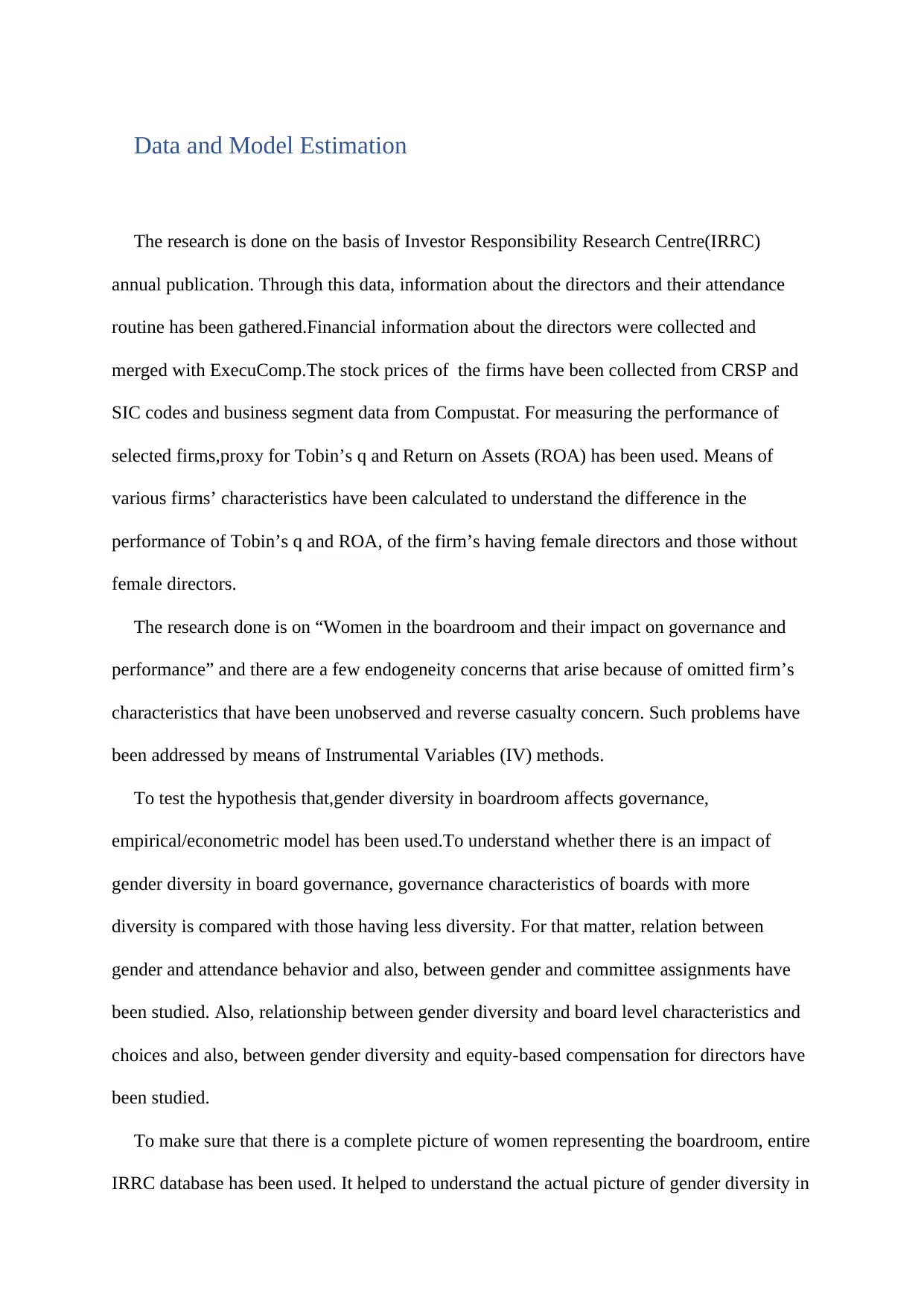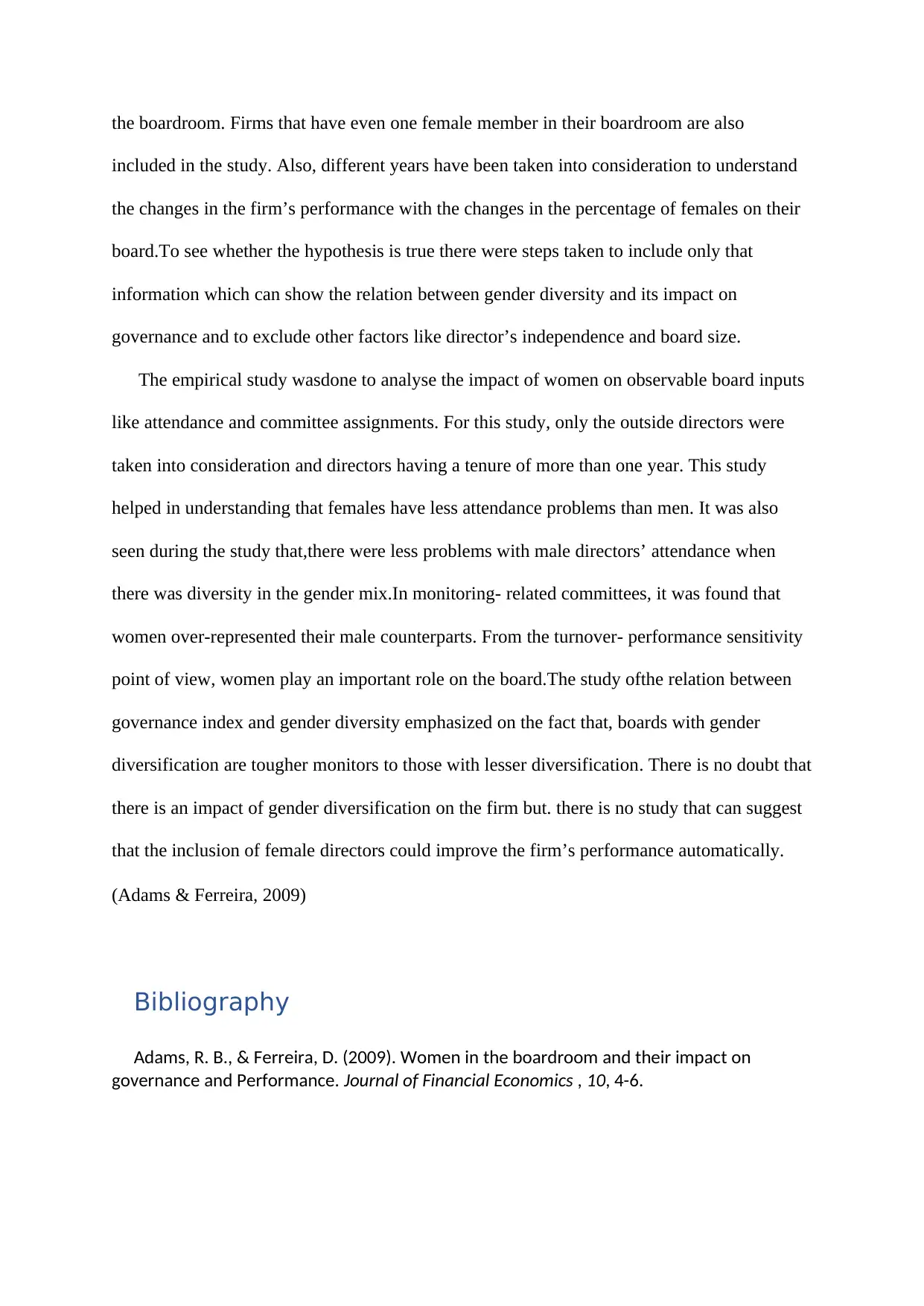Analyzing the Impact of Women in the Boardroom on Firm Performance
VerifiedAdded on 2023/06/03
|2
|631
|486
Report
AI Summary
This research report delves into the impact of women in the boardroom on governance and firm performance, utilizing data from Investor Responsibility Research Centre (IRRC) annual publications, ExecuComp, CRSP, and Compustat. The study measures firm performance using Tobin’s q and Return on Assets (ROA) to compare firms with and without female directors, addressing endogeneity concerns through Instrumental Variables (IV) methods. It examines the relationship between gender diversity and governance characteristics, including attendance behavior, committee assignments, board-level choices, and equity-based compensation. The analysis, encompassing the entire IRRC database, considers firms with at least one female director and various years to understand the changes in firm performance relative to the percentage of females on the board. The empirical study focuses on outside directors with more than one year of tenure, revealing that female directors have fewer attendance problems and are over-represented in monitoring-related committees. The research indicates that boards with gender diversification are tougher monitors, although it does not definitively conclude that including female directors automatically improves firm performance.
1 out of 2







![[object Object]](/_next/static/media/star-bottom.7253800d.svg)